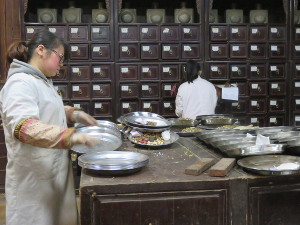Changes in the people’s transport highlights how age-old China has modernised in just a few decades, as GP Speak’s Angela Bettess found on a recent visit.
My husband Paul travelled to China in the 80s and still recalls how much change has occurred in this time. At that time an escorted tour was an prerequisite to travelling there and, disembarking from the plane in Beijing airport, his first glimpse of engineering was the construction of runways with the aid of trucks, wheelbarrows and rocks.
People were dressed in clothing reflecting the Mao Tse-Tung era and there was a strong military presence. Most vehicles were black military cars; bicycles were the main form of the ordinary people’s transport, apart from rundown public buses.
How massively different nowadays! On our visit we saw amazing freeways and fast bullet trains that travel at speeds of up to 400 kph. There were very few bicycles or rickshaws (for goods, not people) on the streets, these having been replaced by motorbikes, often with electric motors.
Official China is aware of its pollution problems, and is now working to address this crucial issue. However, its increasing wealth is reflected in the expensive and modern cars that overwhelm the streets. Today’s revolution is one of rising expectations.
Although the younger and more educated people do speak other languages, foreigners face significant barriers, even in the main cities, with signs and menus often only in Chinese.
In a restaurant in Shanghai, we found glossy images of the dishes available but it was still difficult to know the ingredients. After using our Pictionary skills with the waitress (unsuccessfully), I decided to nudge the Chinese man next to me. His meal looked good and, with the menu in hand, he pointed to the dish, which we then ordered.
When it arrived, it tasted good (and very spicy due to the large volume of chilli) but the meat in the dish had extremely small bones. Perhaps quail, we thought but the following day after quizzing our guide we discovered it was a frog stir fry.
By the time we reached Beijing we had learnt a lot more about Chinese cuisine, and how to order it. The markets in Beijing sold skewers of spiders, snake, grasshoppers, frogs and caterpillars. On the menus we noted sparrow, bamboo worms, chicken heads and lots of other ingredients I have chosen to forget!
Another area of Chinese life which has been brought forward into modern times is the use of traditional Chinese Medicine.
Our private tour in China meant that we had a different tour guide in each place. All of the guides were young, educated and spoke good English. Yet their reliance on traditional Chinese medicine for common ailments, both for themselves and their families, was significant.
Attending a local doctor is likely to result in a prescription for natural medicine. Prescriptions for various combinations of herbs, plants and extracts would be taken to a traditional medicine store to be packaged. Also, old medicinal recipes, passed down in families, might be used for common ailments. Western medicine is available but seems to be a secondary choice.
Yet the modernisation of China is apparent in their buildings and, as noted, the transport.
In Shanghai, the transformation of the city showed clearly, with the dividing line being the curving river. To the west of the river, the old buildings reflected the history of the city but, on the other bank, the massive skyscrapers with contemporary architectural designs showed the modern changes over recent decades.
Ascending the currently tallest building in Shanghai - for how long? - took about 45 seconds to the 96th floor, with another lift to take us to the pinnacle of 100 floors. By then we were half a kilometre above the ground.
At night, people flock to the Bund area along the river for the display of lights and signs. Beijing does not have the massive skyscrapers of Shanghai but the multistorey buildings have been constructed similarly around the old centre of the city with its hutongs and stone bridges over canals. Here, a tourist can take a rickshaw around the area or a gondolier-style boat down the canal.
For pedestrians, there are often overpasses or underpasses to walk through. If you do need to cross the street, pedestrian lights assist to a certain degree but don’t trust the drivers to strictly adhere to your green walking signal … keep your eyes dodging left and right to make sure you make it safely across.
To our relief, we did and arrived home safely to tell the tale.
















